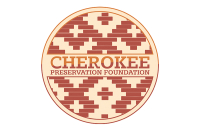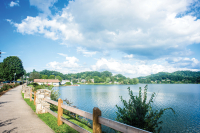Filming in the Great Smoky Mountains National Park

The Great Smoky Mountains National Park requires permits for a number of activities beyond simply camping — getting married, holding political rallies or scattering a loved one’s ashes, for example. Among those activities is commercial filming.
Designed to safeguard resources and minimize interference with ordinary tourists, the permit for commercial filming costs an initial $100, which is based on the average amount of administrative time it takes the National Park Service to process such requests. If processing takes longer, a $50 per hour charge for extended administrative time may be incurred.
Additionally, a $50 per hour charge applies for interviews of park personnel, as well as for continuous on-site monitoring by the NPS.
Location fees range from nothing for two people with just a camera and tripod on up to $750 a day for productions with more than 50 people on set.
Sounds complicated, expensive and difficult, right?
“It was actually easier than I thought,” said Eric Blue, director and co-writer of the feature film “Beacon Point,” which premiered in Hollywood June 10 after being shot primarily in the Smokies in 2015.
“We engaged the parks department and got permission to shoot up there from them,” he said. “It’s fairly straightforward, as long as you follow the process, which was filling out paperwork and paying for the permits.”
After signing a contract with the NPS and purchasing insurance coverage for everyone on set, Blue and his production company were ready for action.
“Once we had all of those ducks in a row, it was fairly simple. It was just a matter of playing by their rules — there’s a lot of rules there for safety, and for maintaining the environment,” he said. “So we had a park ranger that was escorting us around, making sure we were safe, making sure we weren’t bugging the tourists.”
That ranger wasn’t just Blue’s nanny; Blue said he found value in their company.
“They were giving us a lot of background in history and common knowledge, or deep knowledge about the area and the trails,” Blue said. “So it was cool to have somebody who really knew it, so we could ask questions.”





